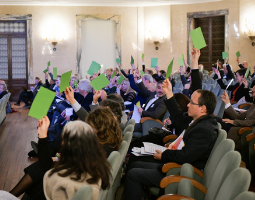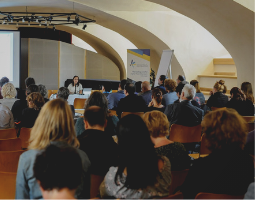Coughing, sneezing, talking and laughing are said to be the most direct and thus by far the most dangerous forms of transmission of the coronavirus. The virus is not only found in the droplets of mucus or saliva that can enter another person's body through nose and mouth, but also in the much finer aerosols. According to the current state of research, the virus can also be transmitted via the air we breathe, and thus also when singing and playing a wind instrument.
Choir rehearsals and playing in wind ensembles are therefore considered by many virologists to be risk situations. Even where services are now permitted again, congregational singing often remains prohibited. For many musicians who already suffer from the shutdown of public performances, this means a considerable additional burden in times of the pandemic. But if you are looking for an answer to the question how the risk of virus transmission when singing or performing with wind instruments can be minimised, it quickly becomes apparent that there is hardly any detailed knowledge and reliable data on this issue.
But there are some initiatives being launched that aim to remedy this research desideratum. It should come as no surprise that most of these initiatives are emerging from the community of those affected. The problem here: empirical studies that might bring valid and reliable results are complex and expensive. Even the institutes for music medicine, which exist at some AEC member institutions and some of which have already taken on the subject, can hardly afford such kind of research as a rule. From among our US partner organisations, we have now been informed about a project that is already described quite clearly in terms of content, but whose funding is far from certain.
The actual risks caused by nanoparticles such as aerosols when singing, both in the professional field as well as in amateur singing with adults and children, as well as the aerosol dispersion when playing wind instruments should be examined. In a third group of test subjects, comparative data are to be collected that measure aerosol emissions during normal everyday speaking. A fairly precise description of the investigation design is already available for the brass ensemble section.
The AEC supports this initiative as an official partner. However, only the AEC members can bring this partnership to life, for example by participating as test subjects. It could also be worthwhile to combine comparable ideas and approaches in Europe with those in the United States, in order to also facilitate funding.
Interested parties are welcome to contact the AEC through stefangies@aec-music.eu.






